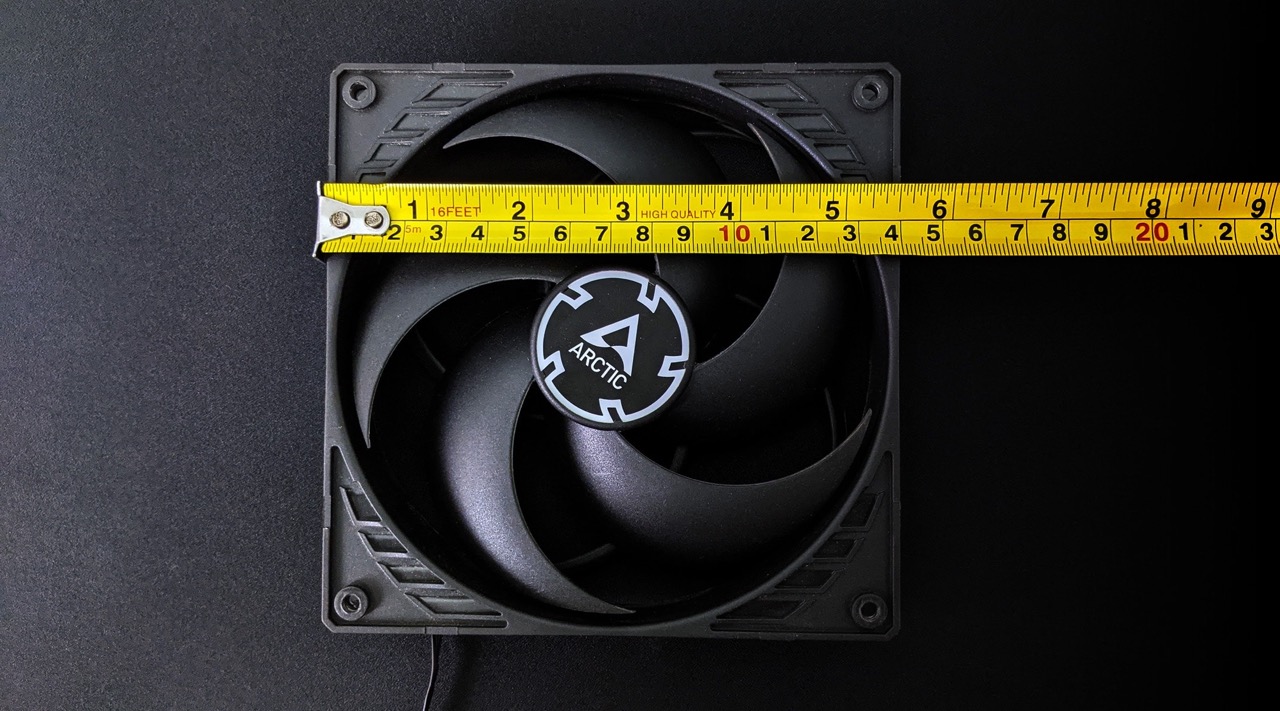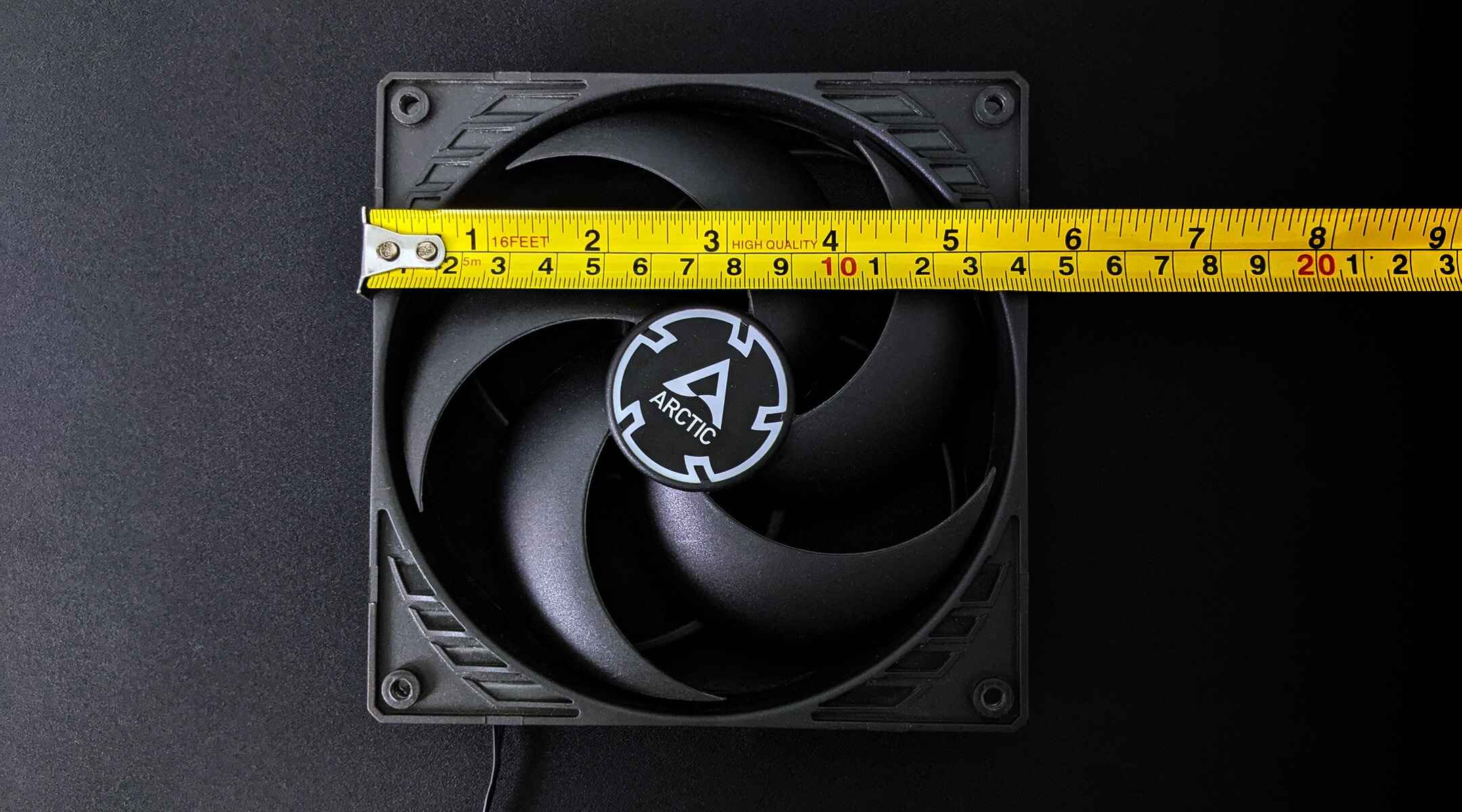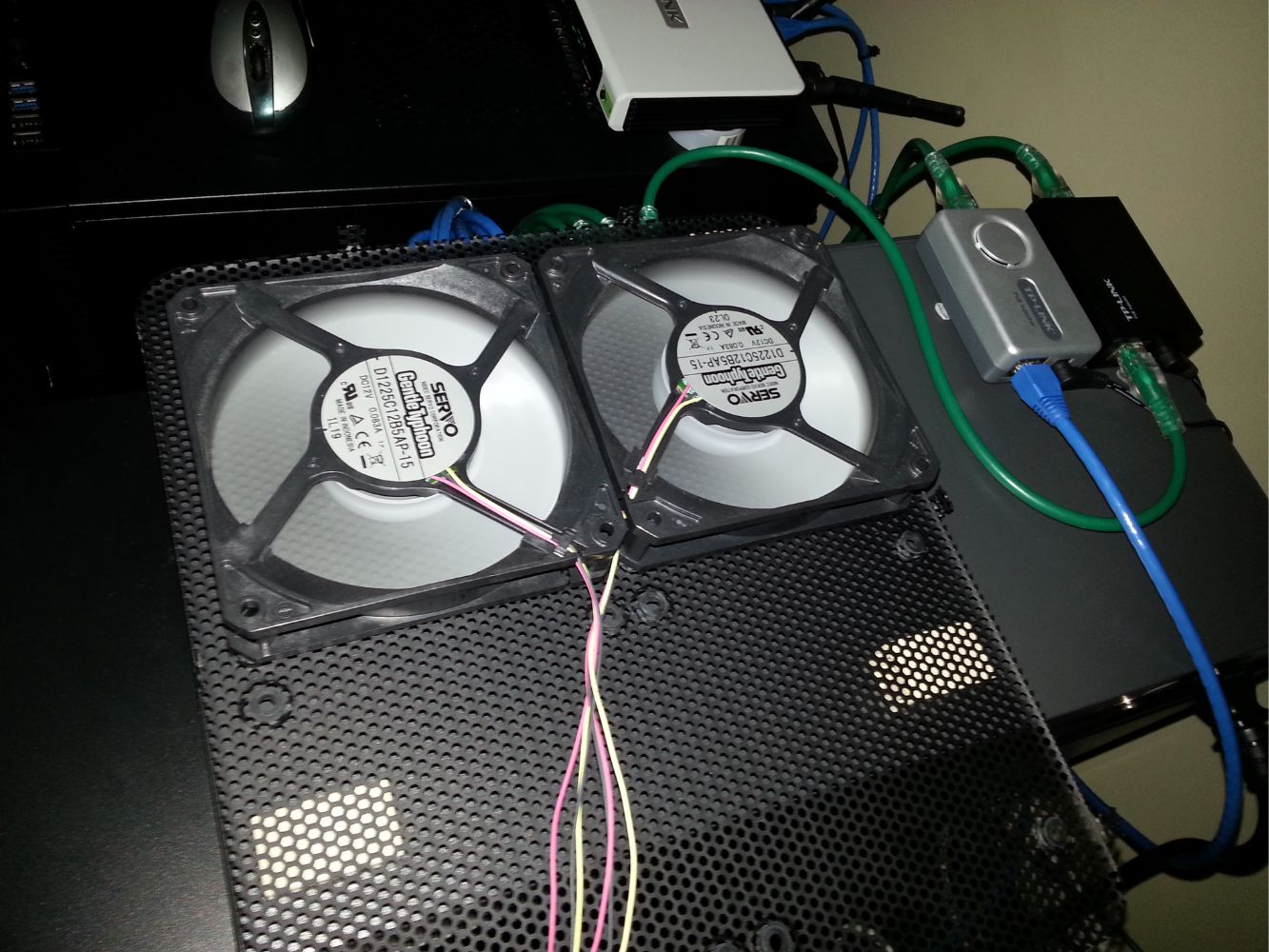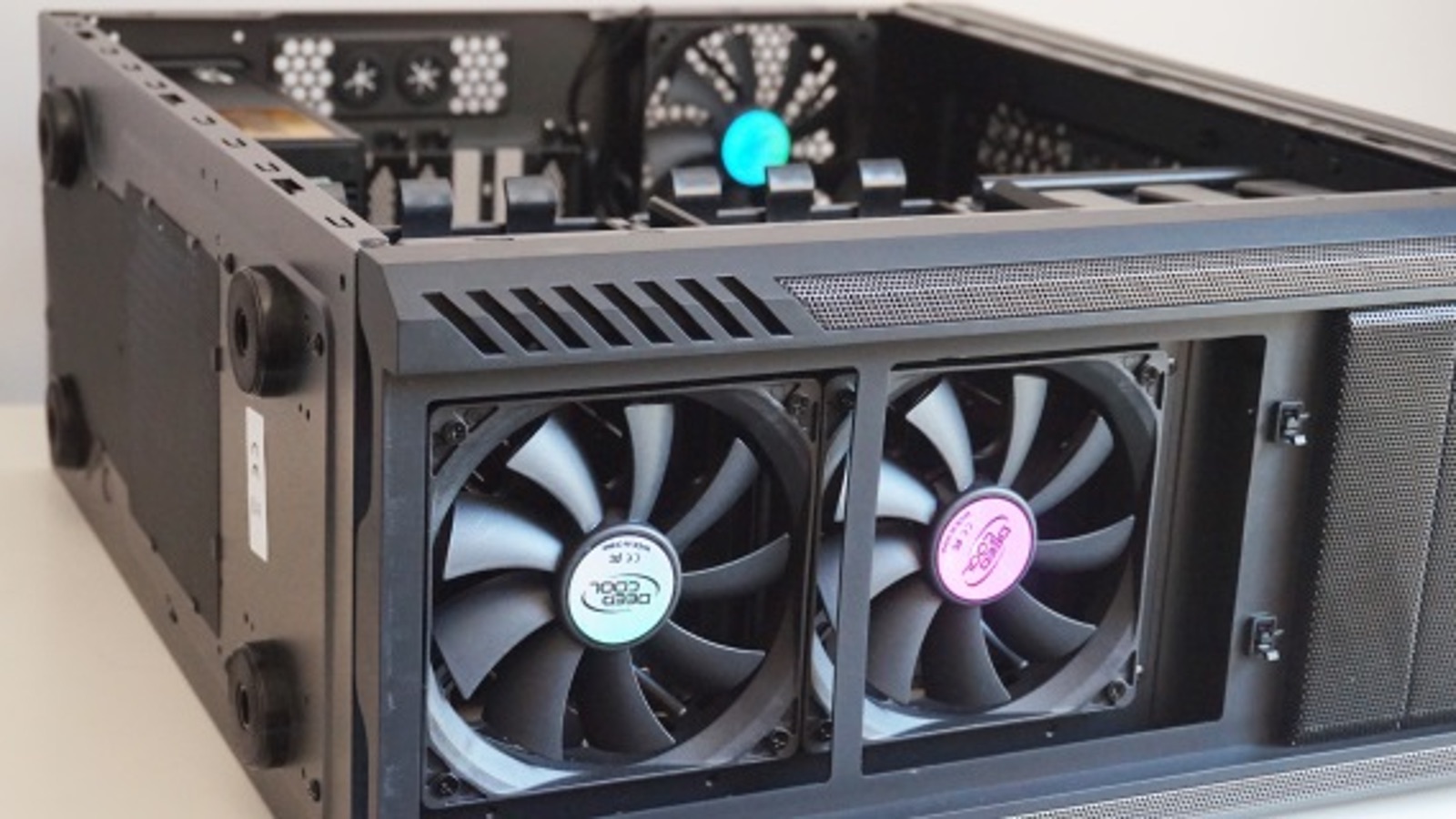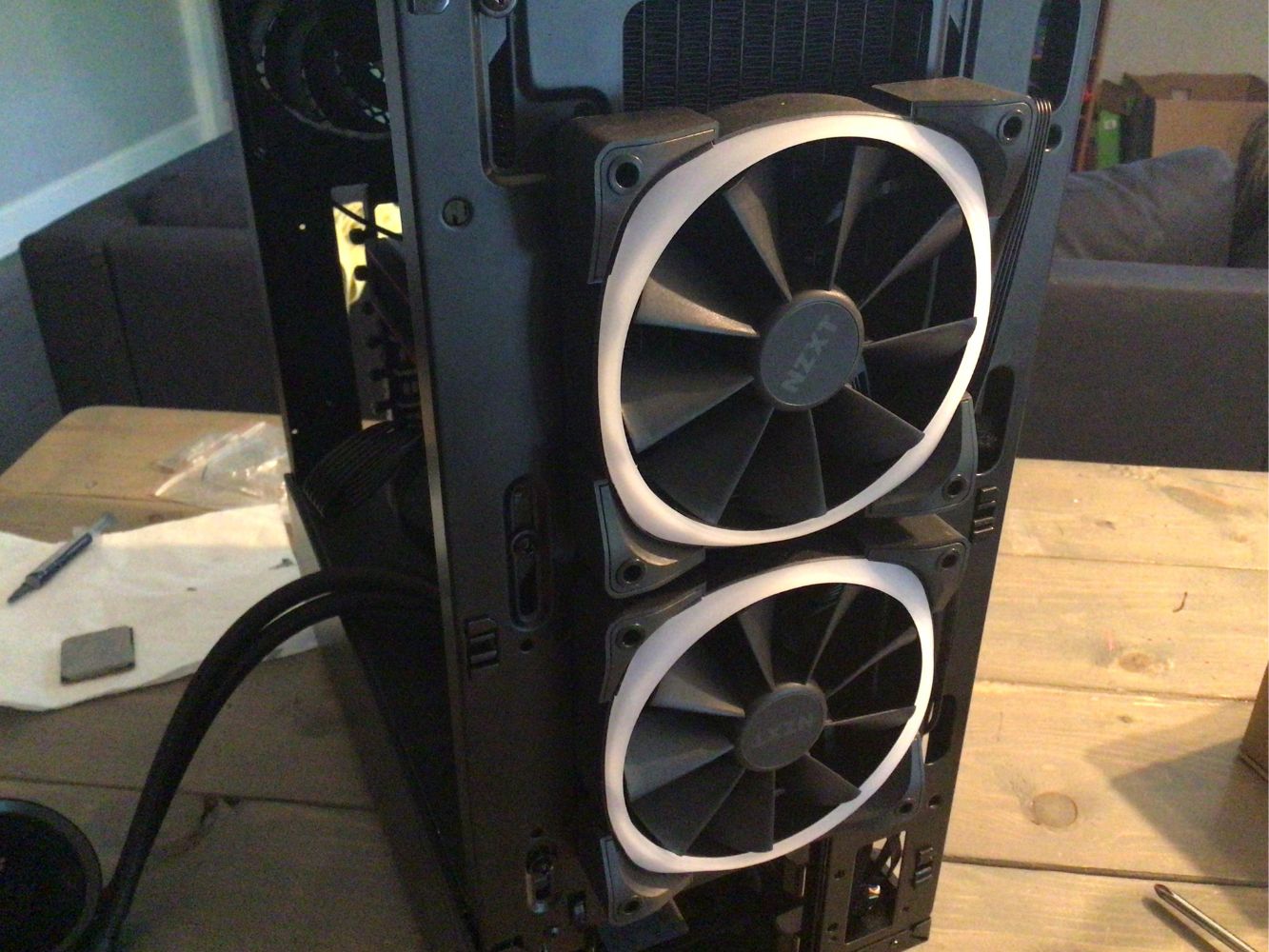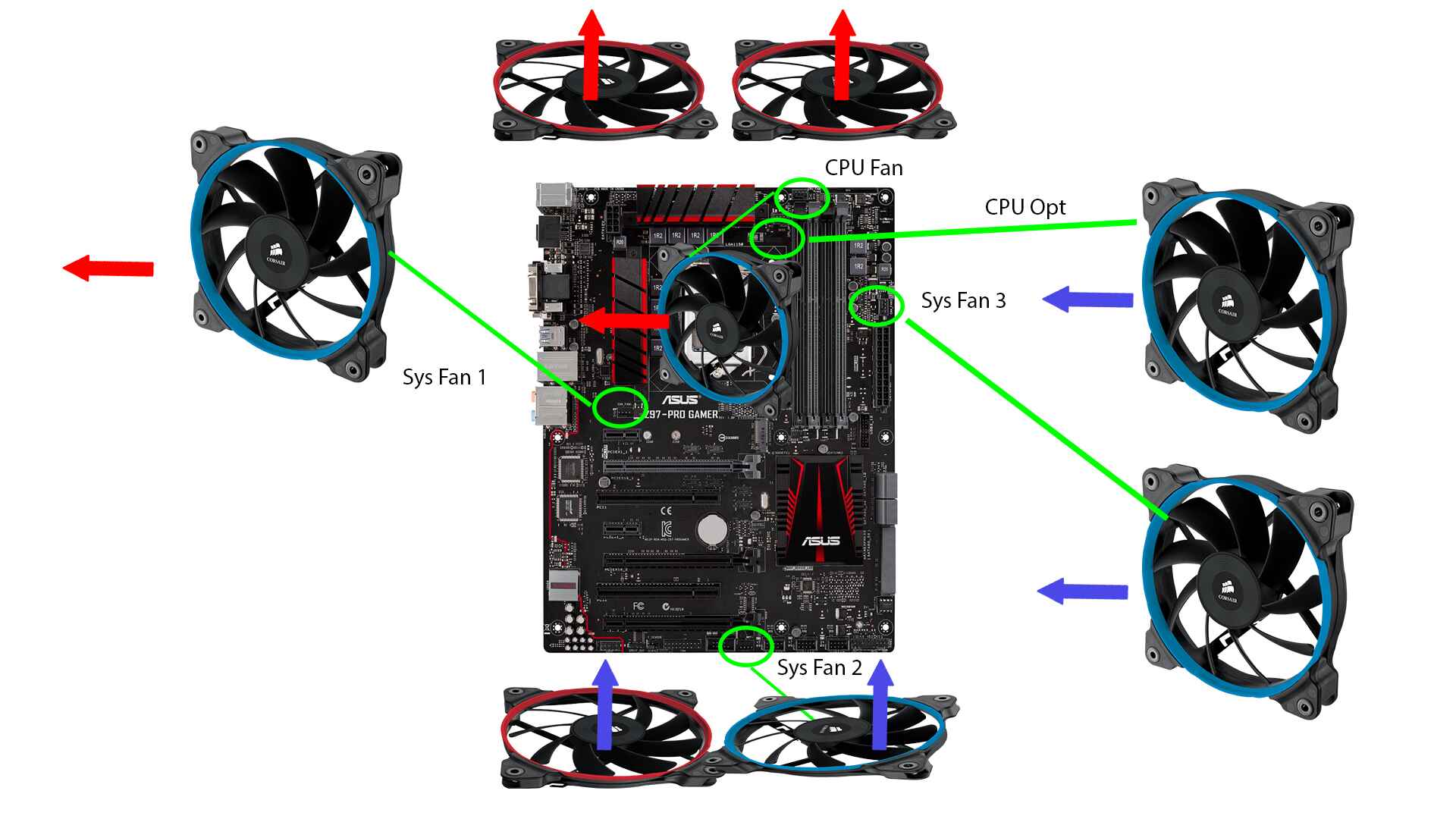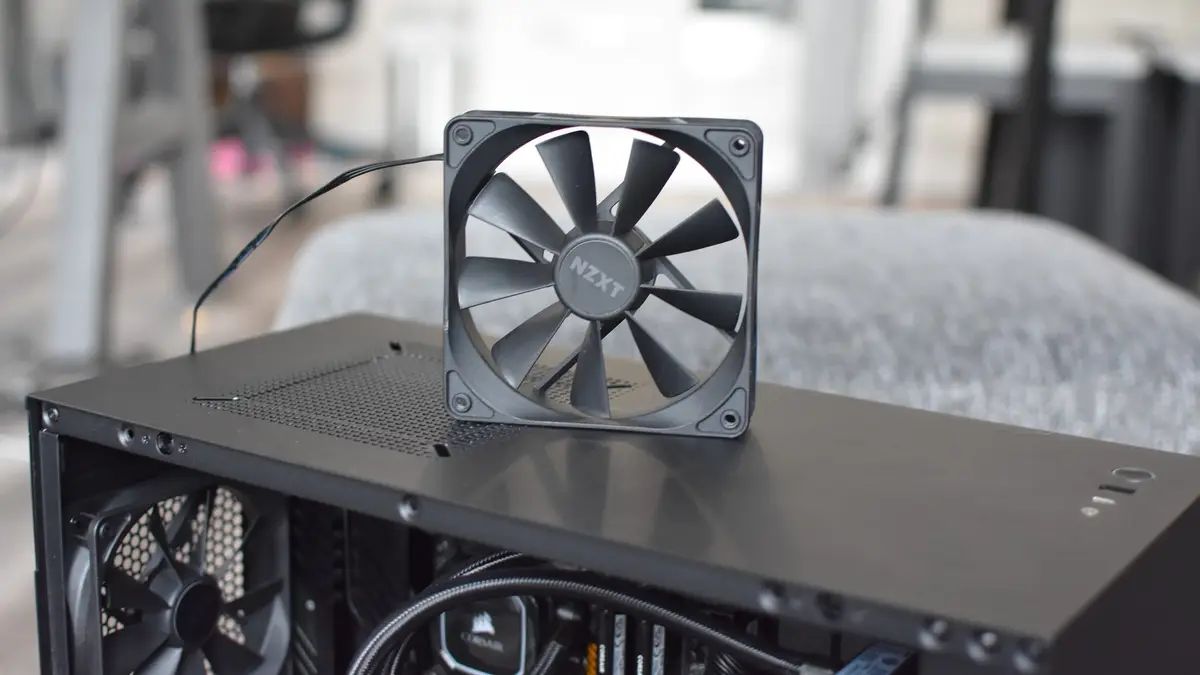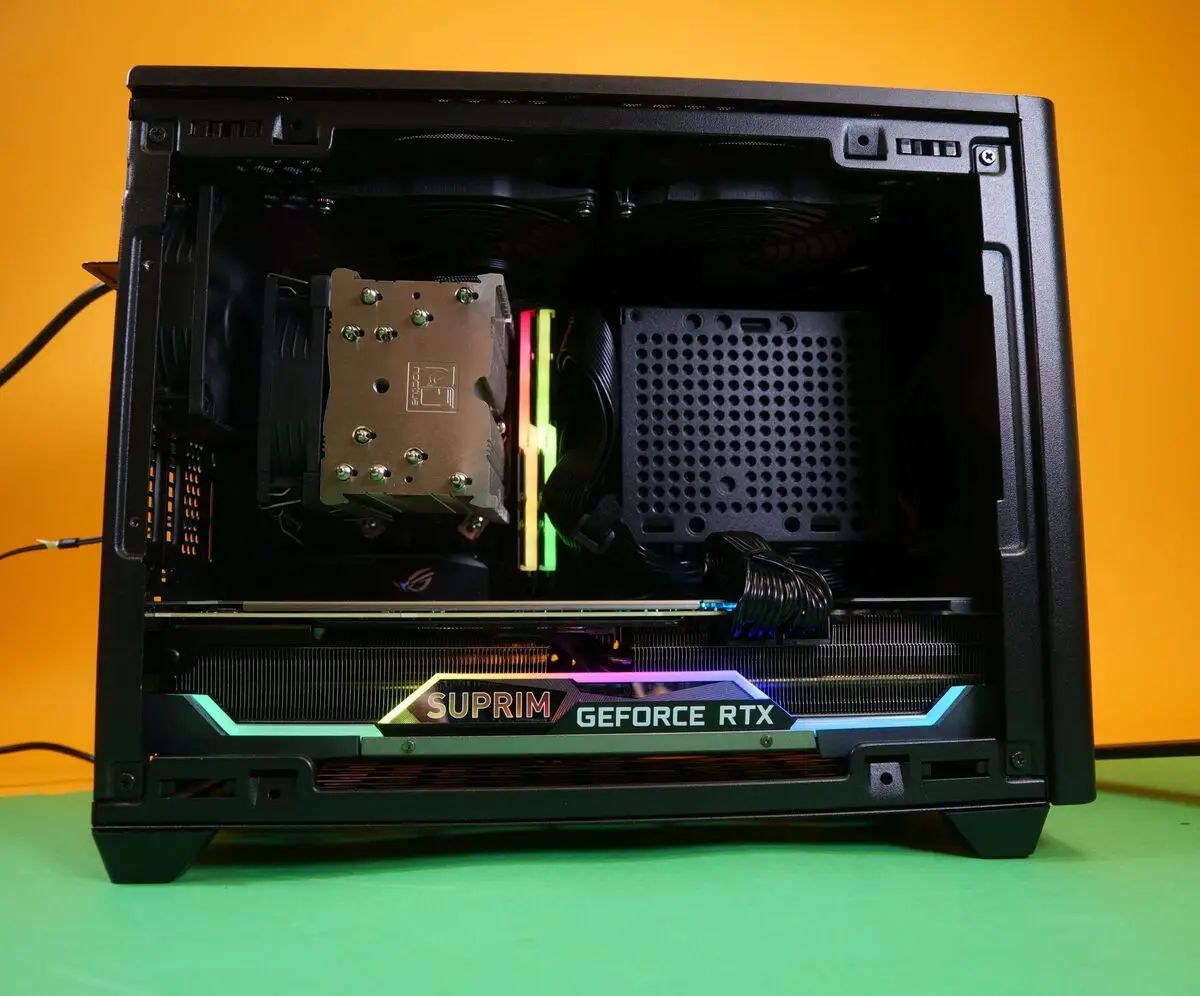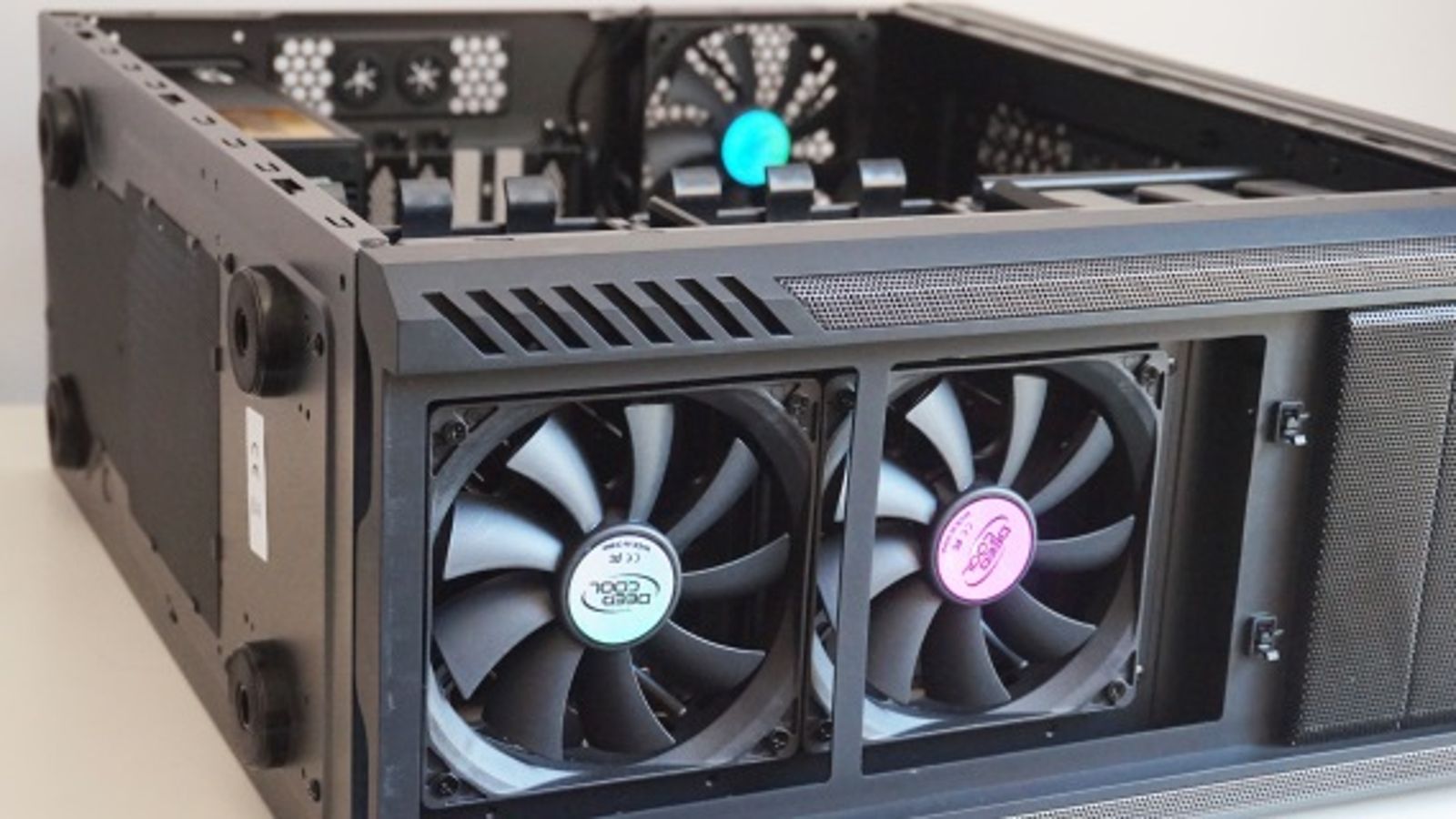Introduction
Welcome to the world of PC cooling! Whether you are a seasoned PC builder or a newbie in the tech world, measuring your case fan PC is an essential step in optimizing the performance and functionality of your computer. Understanding the sizes, speeds, and airflow capabilities of your case fans can help you make informed decisions when it comes to upgrading or replacing them.
Case fans play a crucial role in maintaining the temperature of your computer components, as they help to dissipate heat generated during operation. By ensuring optimal airflow, you can prevent overheating, improve system stability, and prolong the lifespan of your hardware.
In this comprehensive guide, we will walk you through the process of measuring your case fan PC. Whether you are planning to replace your existing fans, add more fans for better cooling, or simply want to gather information about your system, this tutorial has got you covered.
Before we dive into the step-by-step instructions, let’s explore why it is important to measure your case fan PC and the tools you will need for this task.
Why Measure Case Fan PC?
Measuring your case fan PC provides valuable insights into the performance and efficiency of your cooling system. Here are a few reasons why it is essential:
- Optimal Cooling: Proper airflow is vital for maintaining low temperatures inside your computer case. By measuring your case fan PC, you can determine if your current setup is providing adequate cooling or if adjustments need to be made.
- Better System Stability: Overheating can lead to system instability, random shutdowns, and even permanent damage to your hardware components. Measuring your case fan PC helps you identify any potential cooling issues and take appropriate steps to rectify them, ensuring your system runs smoothly.
- Energy Efficiency: Case fans consume power, and optimizing their configuration can result in energy savings. By identifying underperforming or noisy fans, you can replace them with more efficient models, reducing power consumption and lowering overall noise levels.
- Noise Reduction: Excessive fan noise can be quite annoying, especially if you use your computer in a quiet environment. By measuring your case fan PC, you can identify any fans that are running at high speeds unnecessarily or making excessive noise, allowing you to address the issue and create a more peaceful computing experience.
- Planning for Upgrades: If you are considering upgrading your PC’s components, such as the CPU or GPU, it is important to ensure that your case fans can handle the increased heat output. Measuring your case fan PC can help you determine if any additional cooling measures, such as adding more fans or opting for a liquid cooling solution, are necessary.
In summary, measuring your case fan PC allows you to assess the effectiveness of your cooling system, improve system stability, increase energy efficiency, reduce noise, and plan for future upgrades. Now that you understand why it is important, let’s move on to the next section, where we will discuss the tools you will need for this process.
What You Will Need
Before you begin measuring your case fan PC, make sure you have the following tools and equipment ready:
- Screwdriver: You will need a screwdriver to open your computer case and access the fans. The type of screwdriver required may vary depending on the screws used in your case, so ensure you have the appropriate one on hand.
- Tape Measure or Ruler: To measure the physical dimensions of your case fans, you will need a reliable tape measure or ruler. Make sure that the measuring tool you choose has clear and accurate markings for precise measurements.
- Speed/Noise Measurement Device (Optional): If you want to measure the speed or noise levels of your case fans, you may consider using a speed or noise measurement device. These devices can provide you with valuable information about the performance and noise output of your fans.
- Pen and Paper (or Digital Note-Taking App): It is always a good idea to have a pen and paper or a digital note-taking app handy during the measurement process. This will allow you to keep track of the measurements and jot down any important notes or observations.
Additionally, it is recommended to work in a well-lit and static-free environment to ensure safety and accuracy during the measuring process. Now that you have gathered the necessary tools, let’s move on to the step-by-step guide on how to measure your case fan PC!
Step-by-step Guide to Measuring Case Fan PC
Follow these steps to accurately measure your case fan PC:
- Power down and unplug your computer: Before working with any internal components, it is crucial to turn off your computer and disconnect it from the power source to ensure your safety.
- Open your computer case: Use the appropriate screwdriver to remove the screws securing your computer case. Gently remove the side panel to access the internal components.
- Locate the case fans: Identify the case fans in your computer case. They are typically located at the front, rear, or top of the case. Depending on the design of your case, you may have multiple fans.
- Measure the physical dimensions: Using a tape measure or ruler, carefully measure the dimensions of each case fan. Record the height, width, and depth of each fan. Make sure to measure from the outer edges of the fan, including the plastic or metal housing.
- Determine the fan size: Look for a label or markings on the fan itself that indicate the fan size. The most common sizes are 80mm, 120mm, and 140mm. Note down the size of each fan for future reference.
- Measure the fan speed (optional): If you want to measure the rotational speed of your case fans, you can use a speed measurement device. Follow the manufacturer’s instructions to measure the RPM (revolutions per minute) of each fan. Record the speed of each fan for analysis.
- Assess the noise levels (optional): If you are concerned about the noise produced by your case fans, you can use a noise measurement device to measure the decibel levels. Place the device near each fan and record the noise output. This information can help you determine if any fans are excessively noisy.
- Take note of any additional features or specifications: Check if your case fans have any additional features such as adjustable speeds, LED lighting, or extra connectors. These details can be helpful when replacing or upgrading your fans.
- Document your findings: Once you have measured all the necessary aspects of your case fans, it is essential to document your findings. You can use pen and paper, a digital note-taking app, or a spreadsheet to keep track of the measurements, fan sizes, speeds, and any other relevant information.
- Reassemble your computer: After you have completed the measurements and recorded the information, carefully put back the side panel of your computer case and secure it with the screws. Reconnect your computer to the power source.
By following these steps, you can accurately measure your case fan PC and gather the necessary information to make informed decisions about your cooling setup. With the measurements in hand, you will be better equipped to upgrade, replace, or optimize your case fans as needed.
Tips for Accurate Measurement
To ensure precise and reliable measurements of your case fan PC, consider the following tips:
- Take multiple measurements: It’s always a good practice to take multiple measurements of each dimension to ensure accuracy. This helps to account for any slight variations that may occur due to irregular fan shapes or measurement errors.
- Use a level surface: When measuring the dimensions of your case fans, place them on a level surface to avoid distorted measurements. This will ensure that you are measuring the true height, width, and depth of the fans.
- Measure from the outer edges: When measuring the physical dimensions of your fans, be sure to measure from the outer edges of the fan, including any housing or mounting brackets. This will provide you with the most accurate measurements.
- Handle fans with care: Case fans are delicate components, so handle them with care to avoid causing damage. Avoid applying excessive pressure or bending any parts during the measuring process.
- Consider fan placement restrictions: Take note of any space limitations or restrictions within your computer case that may affect the size of the fans you can install. Ensure that the dimensions of the fans you measure are compatible with your case’s available mounting locations.
- Ensure accurate RPM measurements: If you are measuring the rotational speed of your case fans using a speed measurement device, make sure the fans are running at their normal operating speeds. Some motherboards or fan control software may have settings that adjust fan speeds based on system temperature. Check these settings and ensure that fans are running at the desired speeds for accurate measurements.
- Consider ambient noise levels: When measuring the noise output of your case fans, take into account the ambient noise levels in your environment. If possible, perform the measurement in a relatively quiet space to get a more accurate representation of the fan noise.
- Refer to manufacturer specifications: If you have trouble finding measurements or specifications for your case fans, refer to the manufacturer’s website or user manual for accurate information. They might provide detailed specifications that can help you ensure the accuracy of your measurements.
By following these tips, you can minimize errors and obtain precise measurements of your case fan PC. Accurate measurements will provide you with essential data to make informed decisions when it comes to upgrading, replacing, or optimizing your cooling system.
Conclusion
Measuring your case fan PC is an important step in understanding the performance and capabilities of your cooling system. By accurately measuring the physical dimensions, fan sizes, speeds, and noise levels, you can make informed decisions to optimize your computer’s airflow and maintain optimal temperatures for your components.
Through this comprehensive guide, you have learned why measuring your case fan PC is crucial. It allows you to ensure optimal cooling, enhance system stability, improve energy efficiency, reduce noise levels, and plan for future upgrades. By following the step-by-step instructions and implementing the tips for accurate measurement, you can gather the necessary information for making informed decisions about your cooling setup.
Remember, measuring your case fan PC is not a one-time process. It’s a good practice to periodically re-measure your fans, especially if you make changes to your cooling configuration or upgrade your hardware. Regular measurements will help you monitor the performance of your case fans and identify any issues or optimizations needed.
Now that you have the knowledge and tools to measure your case fan PC, go ahead and give it a try. Take the time to understand the specifications and characteristics of your fans, and use the information to improve the overall efficiency and performance of your computer system.
So, go ahead, grab your screwdriver, tape measure, and other necessary tools, and embark on the journey of measuring your case fan PC. Your efforts will pay off with a better-cooled and more reliable computer setup. Happy measuring!







